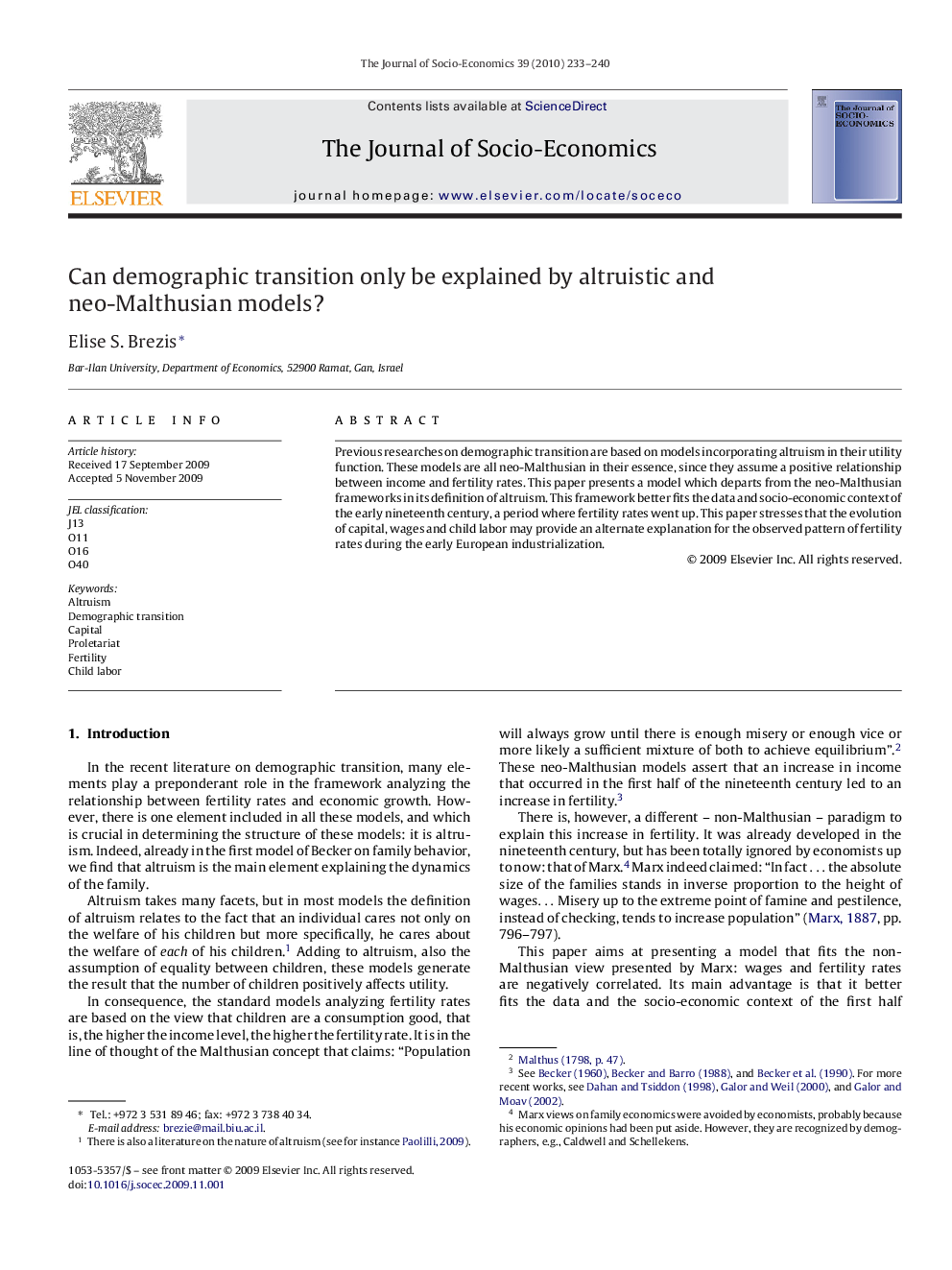| Article ID | Journal | Published Year | Pages | File Type |
|---|---|---|---|---|
| 970454 | The Journal of Socio-Economics | 2010 | 8 Pages |
Abstract
Previous researches on demographic transition are based on models incorporating altruism in their utility function. These models are all neo-Malthusian in their essence, since they assume a positive relationship between income and fertility rates. This paper presents a model which departs from the neo-Malthusian frameworks in its definition of altruism. This framework better fits the data and socio-economic context of the early nineteenth century, a period where fertility rates went up. This paper stresses that the evolution of capital, wages and child labor may provide an alternate explanation for the observed pattern of fertility rates during the early European industrialization.
Related Topics
Social Sciences and Humanities
Economics, Econometrics and Finance
Economics and Econometrics
Authors
Elise S. Brezis,
